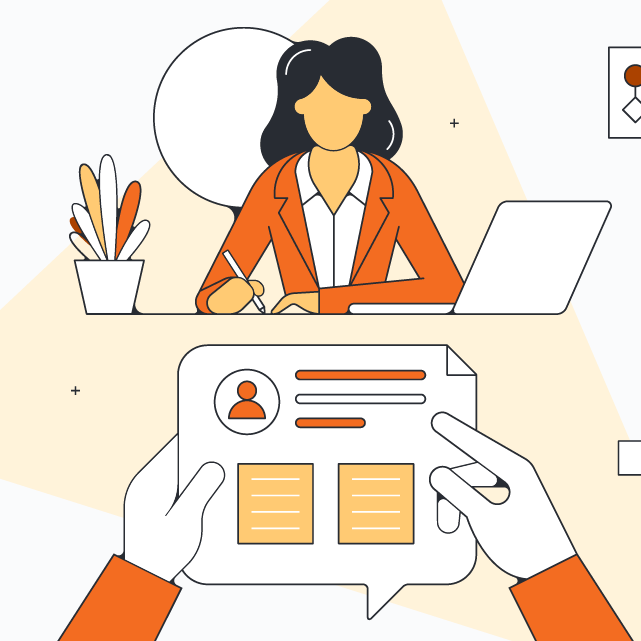For most organizations, the old business adage rings true: 80% of your sales come from 20% of your clients. It would make sense, then, to treat these valuable assets with greater care. Yet, too often, companies don’t have a dedicated process to nurture those key business relationships.
The work isn’t done when the sale closes. Customers big and small can churn for many reasons. The best way to avoid a costly breakup with your most valuable customers is to implement a strategic account management program.
Read on to learn strategic account management best practices and how you can nurture key relationships for long-term success.

What is strategic account management?
Strategic account management (SAM) or key account management focuses on building long-term mutually beneficial partnerships with key customers.
Through in-depth research and assessment, strategic account managers find opportunities to drive value for their partners by identifying problems, offering creative solutions, and leveraging partnerships to move both organizations toward their strategic goals.
A formal strategic account management program can:
- Foster customer loyalty.
- Stimulate growth.
- Increase profitability.
- Drive innovative and scalable service solutions.
Sales vs. strategic management
Unlike a sales program, which focuses on short-term selling cycles and customer acquisition, strategic management goes a step further to develop deeper relationships with a small number of core customers over time.
In short, sales is about the present. Strategic management is about the future.
While the gains may not be immediate, strategic accounts are a vital part of an organization’s long-term success and profitability.
Strategic account management best practices
An effective SAM program isn’t something you stumble upon. The most successful organizations rely on formal, measurable, repeatable processes to develop and maintain their most valuable customer relationships.
Whether you already have a process in place or plan to implement a new strategic account program, use these account management best practices to put your organization ahead of the curve.
1. Assign dedicated strategic account managers
The first step to a successful program is to assign dedicated account managers who are separate from sales. The best programs don’t have managers that must split their priorities or switch focus between making sales and developing strategic accounts.
Instead, create a team (or teams) with dedicated accounts and team leads focused solely on strategic management.
When filling these roles, keep in mind that sales and strategic management have different objectives and require a different skill set and approach to customer relationships.
Strategic account managers should be both analytical and personable. They need to build rapport with customers, think strategically about partnership opportunities and solutions, collaborate and communicate with high-level stakeholders and decision-makers, and lead a cross-functional team.
2. Develop selection criteria for key accounts
While all customers are valuable, not all customers can be elevated to a key account. Be selective. Strategic accounts are reserved for customers whose partnerships can propel your organization toward its goals.
How can you determine which accounts are worthy?
You’ll need to develop a shortlist of selection criteria that hone in on alignments between your two organizations. Focus on three to eight objective criteria, weighted in relative importance to your organization.
These criteria could include:
- Product fit
- Revenue potential
- Growth potential
- Cultural fit
- Geographic alignment
- Solvency
- Existing relationships
- Potential channel partnership
Senior management should take the lead on this stage rather than the sales managers. Selection criteria are based on the organization’s high-level strategic goals and vision, so senior managers are the best fit for this role.
To help you decide, try our decision matrix example template.
3. Polish the handoff from sales
An oft-overlooked step in the SAM process is the transition from sales to account management. How well you handle account transitions is an important part of building a trusted relationship with your customers.
For best results, follow a formal, scripted handoff from the sales team to the account management team. Each customer (whether they become a key account or not) should be methodically organized and tracked in your account system.
Make sure to communicate clearly with the customer, so they understand who their points of contact are and what to expect going forward. For example, how often will you touch base with them via phone or email? Who can they talk to if they have questions or concerns? Setting clear expectations (and following through!) will foster a trusting relationship with your customer.
Learn how our sales and customer success teams at Lucidchart have perfected this handoff in this article.
4. Create a comprehensive customer profile
Once you have a selection process in place and you have identified and assigned your key accounts, you’ll need to develop in-depth customer portfolios.
The strategic account manager has to know their customer inside and out. To do this, they need to conduct research on the client company to build out a comprehensive profile.
Investigate and assess the company’s:
- Business and markets
- Goals and initiatives
- Stakeholder roles and responsibilities
- Key decision makers
- Analyst reports
- Competition
The aim is to understand your customer’s pain points and goals in order to identify opportunities for added value and collaboration. Our thorough customer model overview template can help.
5. Conduct a needs assessment
With your portfolio of customer research, the next step is to conduct a needs assessment.
Consider:
- What are the organization’s pain points?
- Where do your needs or goals overlap and how can you help each other progress?
- Are there any problems looming that you can anticipate and address for them?
Use your data to find ways you can help them, and assess opportunities for collaboration and partnership. Strategic accounts are long-term investments. Instead of a typical 3-12 month transactional lifecycle, you are creating a strategy for the next 1-3 years. Keep that in mind as you assess strategic needs and opportunities.
Remember: The ultimate goal of strategic account management is to grow with your customer.
6. Draft a strategic plan and proposal
Based on your needs assessment, drill down to the best strategic opportunities and draft an account plan. This plan is your strategic roadmap for the next 1-3 years. Once you polish the plan, approach your customer with your proposal.
Your proposal should include things like:
- Strategic recommendations (e.g., potential partnerships with other companies, creative solutions, etc.)
- Specific long-term goals with short-term benchmarks
- Resource requirements
This is your chance to demonstrate to the client that you’ve gone above and beyond to understand and address their needs and that your company is invested in their success.
7. Set a cadence for contacts, meetings, and follow-ups
Once you have a strategic plan in place, set a regular cadence for ongoing communication with your key accounts.
Outline a schedule for each touchpoint, meeting, and follow-up to ensure your customer is in the loop and has the opportunity to give feedback, communicate changes, or ask questions.
This schedule will help you stay updated on what your customer needs, how they are using your product or solution, and how you can help. Clear communication is vital to a strong working relationship with your customers. Our customer journey map template is a perfect way to start.
8. Monitor performance
Continually monitor and measure your performance on each account. What progress have you made on your short-term and long-term goals? How do your results measure against your KPIs?
Monitoring performance is not only important to ensure you deliver on your end but also to track how well the key account fulfills its obligations to you. While you want to drive value for the client, the goal is one of mutual long-term benefit. If the relationship no longer holds the same strategic value for your organization, it’s better to identify that sooner rather than later.
Measure your account performance continually so you can keep the plans on track and pivot or reassess as needed.
Lucid can help with your strategic account management
Strategic account management is complex. With so many moving parts, it is easy for data, insights, or people to fall through the cracks. Yet, key accounts represent the most valuable customers, so you can’t afford to drop the ball.
Lucidchart helps sales teams manage their processes seamlessly. From account maps to process flows, Lucidchart helps you visualize relationships and stay on track as you move through the account management process.

With our Salesforce integration, you can import your CRM data directly into Lucidchart to create account maps. Account maps help managers and teams:
- Identify key relationships in an organization.
- Track the progression of a sale or relationship.
- Transition accounts between reps and teams.
- Document a shareable account plan.
Key accounts are 60% to 70% more likely to close, and key accounts make up the lifeblood of many companies.
Don’t miss out on your best relationships. By implementing a formal strategic account management process, you can reap the benefits of long-term partnerships for many years to come.

Lucidchart serves as a dynamic roadmap to help your team close bigger deals faster.
Learn moreAbout Lucidchart
Lucidchart, a cloud-based intelligent diagramming application, is a core component of Lucid Software's Visual Collaboration Suite. This intuitive, cloud-based solution empowers teams to collaborate in real-time to build flowcharts, mockups, UML diagrams, customer journey maps, and more. Lucidchart propels teams forward to build the future faster. Lucid is proud to serve top businesses around the world, including customers such as Google, GE, and NBC Universal, and 99% of the Fortune 500. Lucid partners with industry leaders, including Google, Atlassian, and Microsoft. Since its founding, Lucid has received numerous awards for its products, business, and workplace culture. For more information, visit lucidchart.com.
Related articles
Crash course in key account management: How to improve your KAM strategy
If you haven’t created a key account sales strategy specifically for your business and your clients—or if you are looking for ways to improve your current key account management process—take a look at our tips.
3 Things I Learned from Closing the Largest Deal of My Career: Trusted Secrets of Closing the Sale
One single deal changed my entire sales career and arguably my entire life. Read about the lessons I learned over the course of that 36-month sales cycle.
How to Have Meaningful Conversations That Triple Your Sales
One of the biggest problems I faced as a new inside sales rep was how to have a conversation that resonated with my buyer. After diving into the structure of my calls with my manager, we found that my calls were more of the interrogation approach, asking closed-ended questions. If there is one major piece of advice I can give, it is to learn from my failure.
Why account management is key to business success
Account managers are essential to maintaining strong client relationships and a healthy bottom line. Learn the roles and responsibilities of account managers and the ways they contribute to the success of their clients and business.

